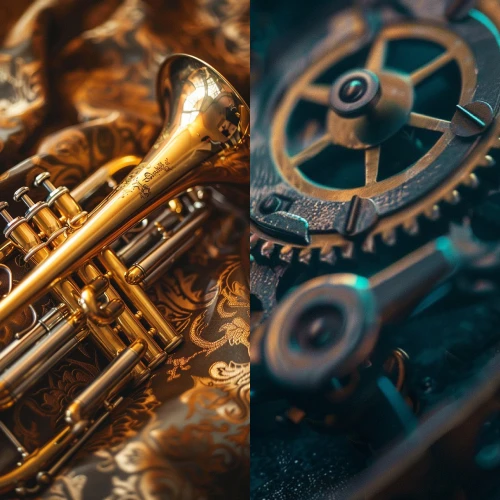Brass and bronze are two distinct types of metal alloys, primarily distinguished by their base elements and the properties they impart to the final material. Both have been used for centuries in various applications, but they differ significantly in composition, characteristics, and uses.

Brass
Composition:
Primary Elements: Brass is an alloy of copper and zinc.
Variations: The proportion of zinc can vary widely, resulting in different types of brass with varying properties. Sometimes, small amounts of other elements like lead, iron, aluminum, silicon, and manganese are added to achieve specific characteristics.
Properties:
Color: Typically has a bright, gold-like appearance, although this can vary depending on the zinc content.
Malleability and Ductility: Brass is known for its excellent malleability and ductility, making it easy to work with.
Corrosion Resistance: Good resistance to corrosion, although not as high as bronze.
Acoustic Properties: Often used in musical instruments due to its excellent acoustic properties.
Conductivity: Good electrical and thermal conductivity, though not as high as pure copper.
Common Uses:
Musical Instruments: Trumpets, trombones, and other brass instruments.
Decorative Items: Jewelry, ornaments, and architectural elements.
Plumbing and Electrical: Fittings, valves, and electrical connectors.
Hardware: Locks, gears, bearings, and ammunition casings.
Bronze
Composition:
Primary Elements: Bronze is primarily an alloy of copper and tin.
Variations: Other elements such as aluminum, manganese, nickel, or zinc may be added to create specific types of bronze with tailored properties.
Properties:
Color: Generally has a reddish-brown color, which can develop a greenish patina over time due to oxidation.
Strength and Hardness: Typically harder and more brittle than brass, providing excellent wear resistance.
Corrosion Resistance: Superior corrosion resistance, especially in marine environments.
Friction: Low metal-on-metal friction, making it ideal for bearings and bushings.
Casting Properties: Excellent casting properties, allowing it to be molded into complex shapes.
Common Uses:
Marine Applications: Ship fittings, propellers, and submerged bearings due to its resistance to saltwater corrosion.
Art and Sculptures: Statues and monuments, owing to its durability and aesthetic appeal.
Industrial Components: Bearings, bushings, and gears where low friction is important.
Historical Weaponry: Cannons and armor, valued for its strength and resistance to corrosion.
Both brass and bronze offer unique properties that make them suitable for a wide range of applications, but their differing compositions give them distinct advantages in specific contexts.